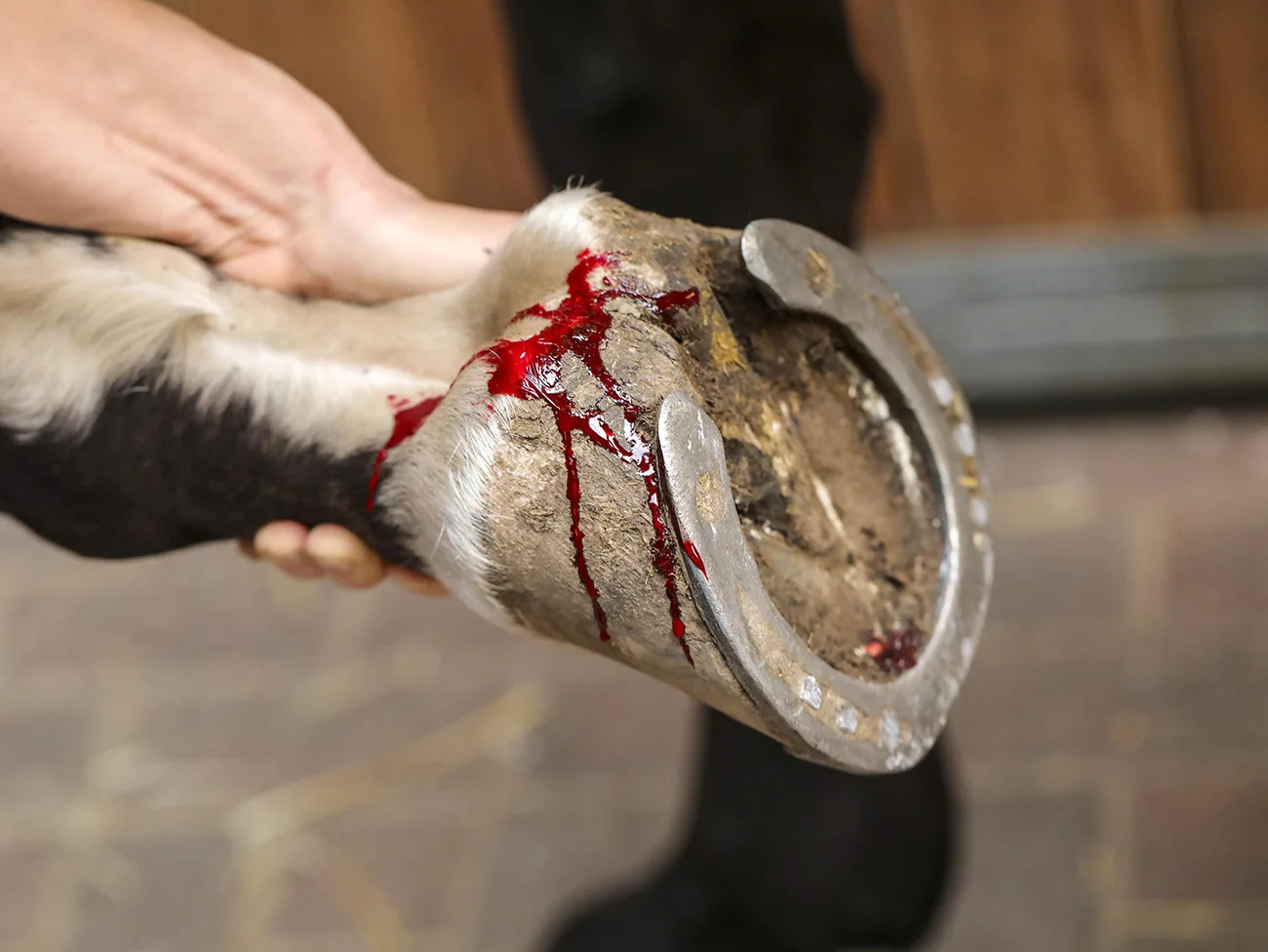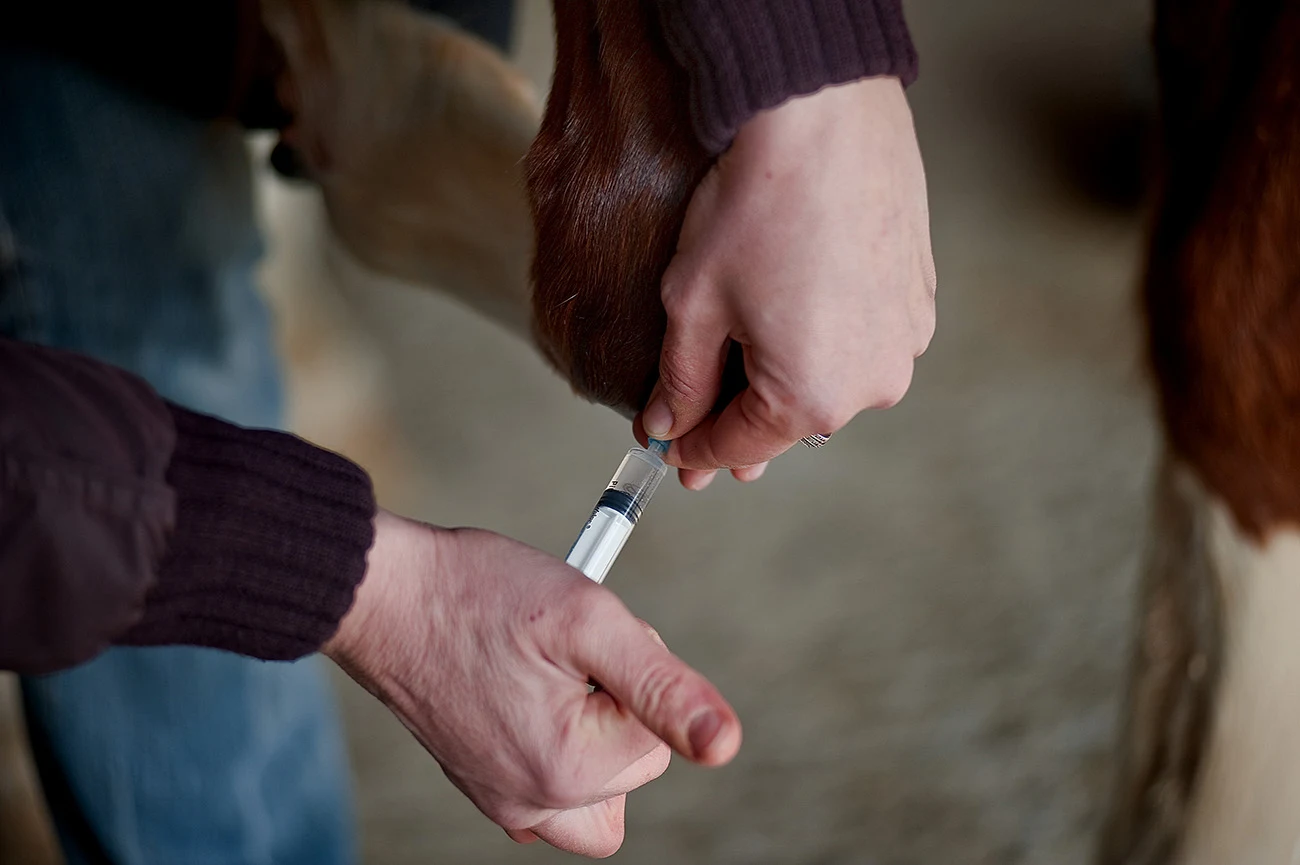In June, several antibiotics that had previously been available over the counter became prescription-only, meaning that they could only be provided under the supervision of a veterinarian. This long-planned shift was the result of guidance issued by the U.S. Food and Drug Administration in June 2021, asking the manufacturers of “medically important” antimicrobials to voluntarily change the labeling of these drugs, as part of a five-year plan launched in 2018 to support antimicrobial stewardship in veterinary settings.
It’s part of a greater focus in recent years on the intersection between humans, animals and the environment—what’s known as a “One Health” approach, encompassing everything from food and water safety to the control of zoonotic diseases (which can spread between animals and humans). The importance of this approach became even more apparent during the COVID-19 pandemic, since the coronavirus responsible likely originated in bats and spread to humans.
Antimicrobial stewardship falls under the One Health umbrella because it’s an issue important to both animal and human health. When antimicrobials are used improperly in any setting, whether it’s in animal or human medicine, it can contribute to antimicrobial resistance, which develops when bacteria, viruses, fungi and parasites change over time and are no longer affected by the medications used to treat infections.
The World Health Organization has declared antimicrobial resistance to be one of the top 10 global public health threats, and the U.S. Centers for Disease Control and Prevention estimates that more than 2.8 million antimicrobial-resistant infections happen each year, killing more than 35,000 people.
Like climate change, antimicrobial resistance is a problem we’ve been hearing about for decades now, with some dire-sounding consequences that seem like they could happen sometime in the distant future. But it’s an issue that’s come much closer to the forefront for veterinarians, who have started to change the ways they use antimicrobials with the hope of preserving their effective use in horses while also safeguarding human health.

So How Bad Is It Really?
“In general, antibiotic resistance is going up,” said Nathan Slovis, DVM, DACVIM, CHT, director of the McGee Medical Center at Hagyard Equine Medical Institute in Lexington, Kentucky. “[It’s] growing astronomically year over year.”
Slovis has been part of some of the One Health-centered meetings convened by the American Association of Equine Practitioners in recent years to look at the issue in a holistic way.
“We had human epidemiologists, along with veterinarians, discussing how [to work] in a multidisciplinary way to be able to safeguard a very important limited resource,” he said, with the overarching goal being to preserve the effectiveness of the most important antibiotics for humans. “Because there aren’t too many new antibiotics coming out. With the regulations and getting them approved for human use, my gosh, it takes years.”
Already in human medicine there are widespread issues with resistant fungal infections and gonorrhea, Slovis said. “These are some of our biggest drugs that are [experiencing resistance],” he added, with significant consequences for public health in humans.
“A lot of the science might be unclear, but I think it’s prudent for all of us to start to do things to reduce our impact in any sort of acceleration of the process [of antimicrobial resistance],” said Gillian Perkins, DVM, DACVIM, clinical professor of large animal medicine at the Cornell University (New York) College of Veterinary Medicine and associate director of the Cornell University Hospital for Animals.
“A lot of the science might be unclear, but I think it’s prudent for all of us to start to do things to reduce our impact in any sort of acceleration of the process [of antimicrobial resistance].”
Dr. Gillian Perkins, Cornell University
“Bacteria have always had things that they produce to protect themselves; it is a natural phenomena,” she said. “Antimicrobial resistance genes and other things have been around forever. But is it accelerating to more antimicrobial resistance now? And then are we able to develop new antimicrobials fast enough, if the ones we have can no longer work? And I think we all know that the answer to that is no; there really haven’t been new breakthrough antimicrobials on the market, so we really have to protect what we have.”
In both animals and people, antimicrobial use increases antimicrobial resistance, Perkins said, so overuse of antimicrobials in one species can transfer to another.
“Do [animal and human bacteria] both interact and transfer to each other? They probably can, and of course, there are zoonotic infections [that can move from] people to animals and animals to people,” she explained.
“In the recent past, I think the focus has been mostly on food-producing animals, because there are such huge numbers of them,” she continued. “And then the food is going on your plate, so there’s that interaction.”
Antimicrobial use in production animals like cattle and pigs has been reined in significantly in recent years.
“And now moving toward [more conservative use] in companion animals—so cats and dogs and horses—is the logical next step,” Perkins said.
“Working here at Cornell, I work on large animals, so I do treat cows, horses, sheep, goats, all of them,” she continued. “And there are a lot of regulations that I have to follow for treating the food animals we see.”
Perkins noted that there aren’t any laws associated when it comes to horses, but she does think the regulations for food animals end up impacting prescription practices for the equine.
“For example, years ago cephalosporins became unable to be used extra-label in food animals,” she said. “We started following those rules for the farm animals, and then we started using [those drugs] less and less in the horses. And at this point, we very rarely use that in the horses. So that’s an example of how regulations in one might help with the other.”
Barbara Byrne, DVM, Ph.D., DACVIM (LAIM), DACVM (Bacteriology and Mycology), is a professor of pathology, microbiology and immunology at the University of California—Davis School of Veterinary Medicine.

“I would say that [antimicrobial resistance] is getting worse rather than better. Certainly, in our practice—we see almost all referrals here—we’re starting to see bacterial organisms that are so resistant there are almost no drugs left to treat the horse with,” Byrne said. “The few that are available are either cost prohibitive to use in animals as large as a horse, or not legal to use, or have a lot of potential for toxicity.
ADVERTISEMENT
“We’re kind of limited in horses in general because their gastrointestinal tract gets easily upset by oral antimicrobials, or antibiotics given even in the vein or in the muscle,” she continued. “So we’re a little bit limited in the number of different types of antibiotics we can use. And because of that, and the resistance that we’re seeing, I fear that we’re going to soon encounter an infection that we cannot treat successfully.”
Conventional Wisdom Is Changing
With antimicrobial resistance becoming an ever-increasing threat, the regulatory framework that governs the use of antimicrobials is working to catch up. The change from over the counter to prescription-only for some antibiotics is one step in that direction, said Byrne.
“That’s sort of a first indication that things are changing, and that’s to make sure that there’s an appropriate veterinarian-client-patient relationship before the antibiotic is utilized,” she said. “I think we’re going to see that in horses and small animals, and we’re going to start seeing products that are restricted or actually outlawed entirely for use in animals. Not just horses, but dogs and cats. We’re already seeing that in cattle and other livestock where certain antibiotics are forbidden, except under certain circumstances, because resistance has been seen.”
The restrictions in livestock stem from their place in the food chain and concerns that resistant bacteria could then cause infections in humans, which isn’t a concern with horses in this country.
“But we still share an environment very close with our horses,” Byrne said. “Things like MRSA [methicillin-resistant Staphylococcus aureus] have already been demonstrated to be passed back and forth between humans and horses. So that’s a concern—that resistant bacteria in horses or our small animal pets can be transmitted back and forth and cause infections in humans. That’s the really scary part of it, and because of that, I fear that we will have legislation that eventually will either limit or exclude certain drugs that are also used in humans for use in animals.”
While legislation may later force certain changes, veterinarians are already voluntarily taking steps to be more judicious in their use of antimicrobials and changing some long-standing methods of treatment to help decrease the incidence of resistance.
“I don’t know that things have changed quite as much as they need to,” said Byrne. “But I do think that they’re changing and that we’re starting to question, ‘Do we actually have to use an antibiotic to treat this horse?’ And that might be in situations where antibiotics are used just in case: I think there may be an infection, so I’m going to cover all my bases and give antibiotics. We’re changing that to only using antibiotics when we’re either sure there’s an infection or highly suspicious that there’s an infection present.”
One example of that “just in case” approach is with Rhodococcus equi, a bacterium that lives in the soil and can cause pneumonia in foals.
“What ended up happening is that we were screening [foals] with ultrasound at an early age, and if we saw anything in the chest that looked like pneumonia, veterinarians would place them on antibiotics right away, even though they’re not sick,” said Slovis. “Because the whole idea was to prevent it, because we don’t have a vaccine for that right now.”
But practitioners started seeing a spike in resistance about a decade ago, leading Slovis and others at Hagyard to partner with researchers at Texas A&M University and the University of Georgia to study the prevalence of resistant rhodococcus on Kentucky breeding farms.
Their results were published in “Veterinary Microbiology” in 2019. One hundred farms were surveyed, and rhodococcus was cultured from soil samples. Seventy-six percent of farms yielded resistant strains of the bacterium.
The widespread screening of foals for pneumonia was leading many of them to be given antibiotics unnecessarily, Slovis said, and that’s suspected of causing the spike in resistance.
“We were overtreating these animals,” Slovis said. “Because we know the majority of these animals can resolve the infection on their own. But I can’t tell you which ones will and which ones won’t. So when a client brings in their million dollar foal, you’re going to treat it.”
Since then, Hagyard has changed its protocol—as have many other clinics—and no longer routinely dispenses antibiotics for every foal with slightly suspect findings on an ultrasound.
“Just because you see a problem in the chest, you don’t need to put [the foal] on antibiotics right away. [You’re looking to see] if it’s a certain size, or you have abnormalities in your blood workup. We will use more diagnostics to determine if this animal really needs to be on antibiotics or not,” Slovis said. “And even when we do that, I’m probably overtreating, but we’ve decreased it significantly.”

Another common use of prophylactic antibiotics is in conjunction with joint injections.
For decades, veterinarians have injected antibiotics when administering other drugs to treat osteoarthritis, particularly when doing joint injections on the farm rather than in a clinic, with the thinking being that it would help prevent joint infections.
Lynn Pezzanite, DVM, MS, DACVS-LA, assistant professor of equine emergency and critical care at the Colorado State University College of Veterinary Medicine and Biological Sciences, conducted a study along with other CSU researchers examining the incidence of synovial sepsis in joints after being injected.
The retroactive study looked at horses receiving joint injections from CSU veterinarians from 2014 through 2018, and then compared the incidence of sepsis when joints are injected by an ambulatory veterinarian in the field compared to the incidence in a hospital setting. The study was published in the “Equine Veterinary Journal” in May 2022.
“We found that we have a fairly even split; about 40% of our joint injections are done in the field and 60% in-house here, at least at the time when we published [this data],” she explained. “We found that the frequency of sepsis wasn’t higher when performed in the field and was not higher with or without concurrent antibiotic therapy, which is what we anticipated finding.
“This was the first paper to directly compare synovial sepsis rates in the field versus hospital,” she continued. “But other papers have noted similar findings, in that no additional benefit to reduce infections has ever been demonstrated with inclusion of antibiotics and joint injections, except when co-administering with polysulfated glycosaminoglycans, which we, in our practice, rarely administer anymore anyway, but other papers have also reported similar infection rates for joints injected in the field.”
The CSU study has some limitations, Pezzanite noted.
ADVERTISEMENT
“Some equine practitioners are just hesitant to inject joints in the field, in environments they might consider inherently dusty or dirty, so there may have already been some selection bias if people aren’t injecting in those environments,” she said. “Perhaps if they had been, we would have seen a difference, but I think that’s hard to tease out in a retrospective study.
“The other general point is that the overall rate of joint infection following injection is so low across the board—across studies, less than 0.1%—that, statistically, we probably need to evaluate millions and millions of injections to detect any potential differences,” she added.
“I think certainly everyone tries to practice in the most educated manner that we can, right? It just takes time to change some of those perceptions.”
Dr. Lynn Pezzanite, Colorado State University
Pezzanite also noted that several recent reviews of antibiotic use specific to equine practice have suggested that prophylactic antibiotics aren’t called for unless infection rates are over 5%, which is far above the rate found in the CSU study.
“So I think that, to us, further supports that antibiotic inclusion prophylactically is probably not indicated,” she said. “Other aspects of case management that are within our control are probably more important to reduce infection rates, like aseptic technique, which has been repeatedly shown to reduce infection rates.”
It’s difficult to prove a direct link between prophylactic use and resistance, Pezzanite added, so researchers can’t say for certain that’s the case.
“But there are other considerations, too,” she said. “One, the antibiotics have been shown to be toxic to joint tissues at higher concentrations. Two, you’re adding to the expense for the client; it’s at least $40 or $50 extra to include antibiotics for something that hasn’t been shown to be beneficial.
“And so I think using antibiotics in joint injections is a platform for discussion of antibiotic use in general,” Pezzanite continued. “I think it just begs the question of, ‘Can we justify antibiotic use in each situation?’ If we can’t make a really great argument for it, then we probably shouldn’t be using it.”
But it can be difficult for practitioners, and their clients, to adjust to new ways of doing things, Pezzanite acknowledged.
“When we first published [that study], I think it was met with some shock,” she said. “But I think the conversation has really grown sur rounding that. And I think it’s more just a comment on how long it really does take to actually change clinical practice, which is usually about five to 10 years after the conversations began to start. So we’re seeing a great response [to the findings], and I think certainly everyone tries to practice in the most educated manner that we can, right? It just takes time to change some of those perceptions.”
What Owners Can Do
In a time when the equine practice is starting to change and adapt to try to curb antimicrobial resistance, owners and trainers need to be prepared to change along with it, experts say.
That means following the guidance that’s been out there for years—like finishing the entire prescribed course of antibiotics, and not using previously prescribed leftover antibiotics for a different issue.
“The worst thing that can happen is that little swelling of a leg, or getting cut on a leg, and the client—without telling their vet—decides to put the horse on antibiotics,” said Slovis, adding that there are other, better ways clients can treat such minor injuries. “You can put a bandage on it and do a topical. When I cut my finger, do I put myself on antibiotics?”
It’s a matter of educating clients who may not really understand the larger implications, he added.
“They’ll be like, ‘Well, it’s no big deal; I’m just affecting my horse.’ No, down the line, you’re affecting the resistant patterns in the soil, in the environment, and all of a sudden you get a storm, and those resistant organisms go down into the creek,” Slovis said. “And then they can share their DNA to other resistant organisms. We’ve shown that already.”
“You can’t have a mentality of fear.”
Dr. Nathan Slovis, Hagyard Equine Medical Institute
There are other instances where antibiotics just plain won’t do anything at all.
“When a person has an upper respiratory viral infection, and you have a fever, you don’t need antibiotics for that, right? That’s a viral infection. Antibiotics like penicillin, that sort of thing doesn’t work against a virus,” said Perkins. “We certainly have a lot of other problems in horses, like equine asthma, where a horse has a cough. It’s more related to the horse’s environment and things like that than it is to an infection.”
Above all, experts say, owners need to trust their veterinarians, who are more educated than ever about judicious use of antibiotics and the importance of using them sparingly.
“This is here to stay. Right now we need to start thinking about the appropriate selection, dose and duration of antibiotics,” said Slovis. “You can’t have a mentality of fear. What I mean is, 30% of antibiotic prescribing in humans is unnecessary and dangerous too. But you know why they do it? [Because] we never want to hear the next day, ‘Hey, Doc, remember that horse you said not to treat? Well, he died yesterday,’ or, ‘Remember that woman you sent home that had tonsillitis, and it wasn’t a big deal? Well, she got a septic infection and went into cardiac arrest.’
“Those are rarities,” he continued. “Those are less than 1%. So [doctors and veterinarians] tend to think, ‘God, I don’t want that to happen again. The next time I see one of these, I’m treating with antibiotics.’ You treat because you remember some of your failures, but you have more successes than failures.”
This article originally appeared in the September 2023 issue of The Chronicle of the Horse. You can subscribe and get online access to a digital version and then enjoy a year of The Chronicle of the Horse and our lifestyle publication, Untacked. If you’re just following COTH online, you’re missing so much great unique content. Each print issue of the Chronicle is full of in-depth competition news, fascinating features, probing looks at issues within the sports of hunter/jumper, eventing and dressage, and stunning photography.














